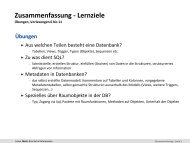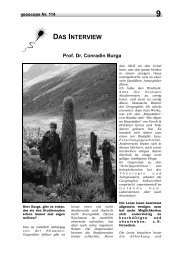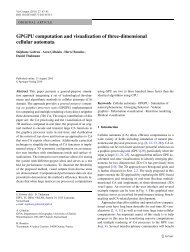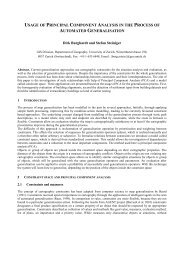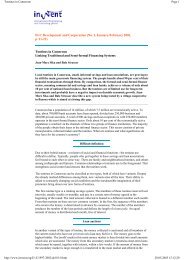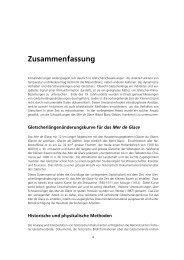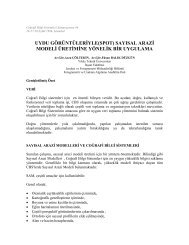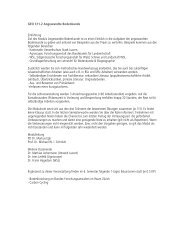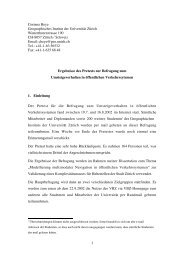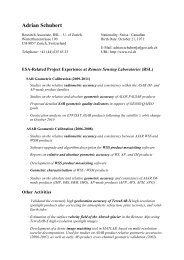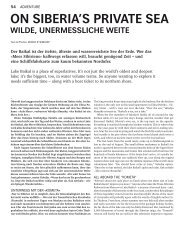KYRGYZSTAN TODAY Policy briefs on - Department of Geography
KYRGYZSTAN TODAY Policy briefs on - Department of Geography
KYRGYZSTAN TODAY Policy briefs on - Department of Geography
Create successful ePaper yourself
Turn your PDF publications into a flip-book with our unique Google optimized e-Paper software.
Susan Thieme,<br />
University <strong>of</strong> Zurich, Switzerland<br />
Where to Return to? Rural-urban Interlinkages<br />
in Times <strong>of</strong> Internal and Internati<strong>on</strong>al Labour Migrati<strong>on</strong><br />
Summary<br />
Ec<strong>on</strong>omic and social activities <strong>of</strong> migrants transcend internal and internati<strong>on</strong>al as<br />
well as rural and urban divides. Migrati<strong>on</strong> circuits are not bipolar but rather develop<br />
towards a multi-local network <strong>of</strong> family members putting into questi<strong>on</strong> “return” as an<br />
<strong>of</strong>ten assumed c<strong>on</strong>clusi<strong>on</strong> to a successful migrati<strong>on</strong>.<br />
This briefing explores the multi-local migrati<strong>on</strong> patterns <strong>of</strong> Kyrgyzstan’s mobile<br />
populati<strong>on</strong> placing return in a wider c<strong>on</strong>text and providing recommendati<strong>on</strong>s how<br />
to facilitate circular migrati<strong>on</strong> and ties to places <strong>of</strong> origin and new places <strong>of</strong> work and<br />
living.<br />
The problem<br />
In Kyrgyzstan, labour migrati<strong>on</strong> <strong>of</strong> the young (rural) populati<strong>on</strong> is mainly perceived<br />
as temporary and return is <strong>of</strong>ten seen as the successful c<strong>on</strong>clusi<strong>on</strong> to a migrati<strong>on</strong>.<br />
Migrants, however, return <strong>on</strong>ly under certain circumstances and not necessarily to<br />
the rural areas where they originally come from. This calls for policies acknowledging<br />
increasing complex multi-local settings <strong>of</strong> households transcending the rural-urban and<br />
nati<strong>on</strong>al and internati<strong>on</strong>al divide.<br />
Background<br />
Defining return and the migrati<strong>on</strong> development nexus<br />
Despite the impact <strong>of</strong> remittances <strong>on</strong> c<strong>on</strong>sumpti<strong>on</strong> and investment, return migrati<strong>on</strong><br />
is supposed to hold huge potential for human development and positive social change.<br />
“Return” <strong>of</strong>ten implies that the cycle <strong>of</strong> migrati<strong>on</strong> will be ended and people will be<br />
ec<strong>on</strong>omically and socially better <strong>of</strong>f. But in many cases the “return” is the beginning <strong>of</strong> a<br />
new or an extensi<strong>on</strong> <strong>of</strong> the existing cycle as migrati<strong>on</strong> patterns in Kyrgyzstan show.<br />
Up to 20 percent <strong>of</strong> Kyrgyzstan’s populati<strong>on</strong> seeks better ec<strong>on</strong>omic opportunities in<br />
Russia and Kazakhstan, sending remittances worth 30 percent <strong>of</strong> the GDP especially into<br />
rural areas (Zentralasienanalysen 2008). What is <strong>of</strong>ten overlooked in this internati<strong>on</strong>al<br />
migrati<strong>on</strong> discourse, is that internati<strong>on</strong>al movement is str<strong>on</strong>gly linked to internal rural<br />
to urban migrati<strong>on</strong> mainly from the South to the North, the capital Bishkek and its<br />
surroundings. In additi<strong>on</strong> people <strong>of</strong> different age groups or generati<strong>on</strong> reveal different<br />
ideas and plans about where to exactly return to in Kyrgyzstan. While the elderly <strong>of</strong>ten<br />
108





